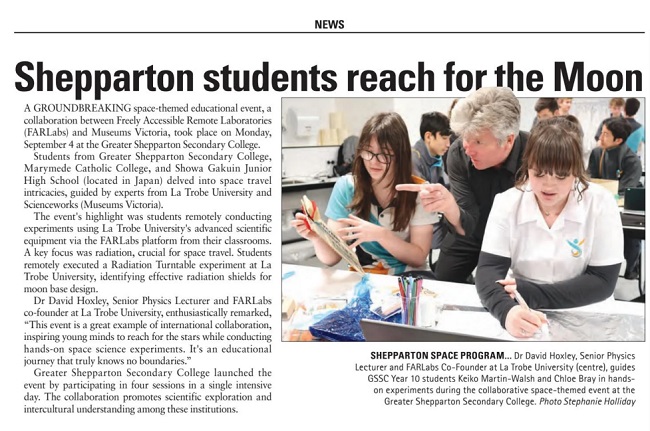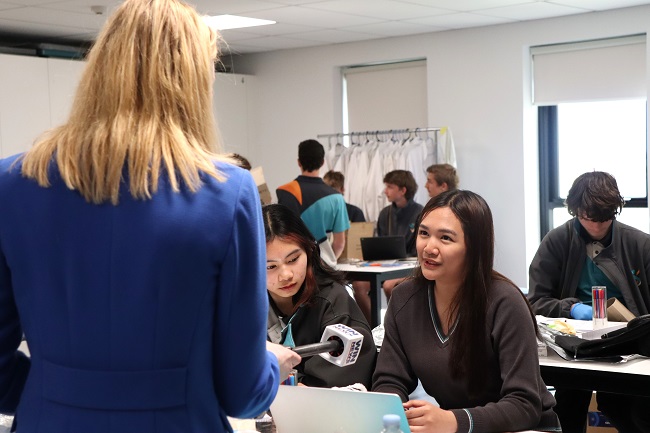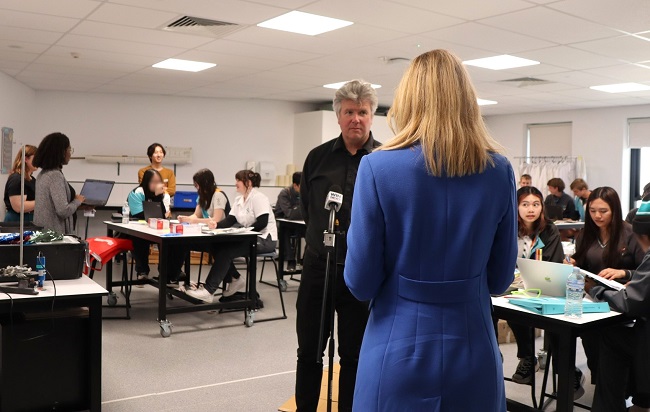GSSC partnered with Japanese students earlier this week where they took part in a space event, learning from La Trobe University and Museums Victoria experts about what it takes to survive on the moon.
Thanks to a collaboration between the Freely Accessible Remote Laboratories (FARLabs) and Museums Victoria, the Year 10 Physics and Japanese students from GSSC joined remotely with Marymede Catholic College and Showa Gakuin Junior High School to explore the science of space travel.
Students were provided an opportunity to conduct an experiment using high-class scientific equipment at La Trobe University’s Bundoora campus, which they had access to online from their classrooms via the FARLabs platform.
Additionally, students used the concepts they learned to design a habitable moon base.
FARLabs co-founder, La Trobe’s Professor Brian Abbey has seen how space, which is a new topic for the program, captures students’ imaginations.
“Space really does engender so much excitement from students, and we’ve seen that borne out by the events we’ve run with high schools so far,” Professor Abbey said.
The topic of space also offers several entry points for students to engage with a diverse range of scientific concepts.
“During the activities, they explore quite advanced concepts in science and health," Professor Abbey said.
"They think about exercise and diet, and the challenge of maintaining a healthy body in extreme environments."
One key concept the students learnt about was radiation, which is explored in the Australian Curriculum and a big consideration when thinking about space travel.
“On Earth, we’re shielded from a significant amount of harmful radiation by our planet's atmosphere and magnetic field," Professor Abbey said.
"However, when astronauts venture into space they're exposed to higher levels of ionizing radiation from sources such as cosmic rays and solar radiation."
Across the past decade, FARLabs has facilitated free access to world-class scientific equipment to students across Australia and overseas.
Museums Victoria has been a key collaborator for the new space event, which has run multiple times in 2023.
Throughout the year, Museums Victoria Senior Programs Officer Dr Frazer Thorpe has seen how the practical experiment gives students a deeper connection to the concepts they’re learning.
To him, it is most obvious when they are designing their moon bases.
“They were talking about radiation. They were thinking about the practical experiment they were doing and then how to apply that to their design,” Dr Thorpe said.
The students will use the FARLabs platform to remotely conduct a Radiation Turntable experiment. They will control two turntables located at La Trobe University, one housing different sources of radiation and the other housing different materials that absorb radiation.
By turning the tables and lining up the radiation sources with the shield materials, the students can measure which materials are the best protection from harmful radiation – knowledge they can then use when designing their moon bases.
FARLabs is funded by a philanthropic grant from the Telematics trust and have been aided by the Japan Aerospace Exploration Agency in expanding their school network in Japan.
More on WIN News: https://fb.watch/mUMCDM62SO/





Follow